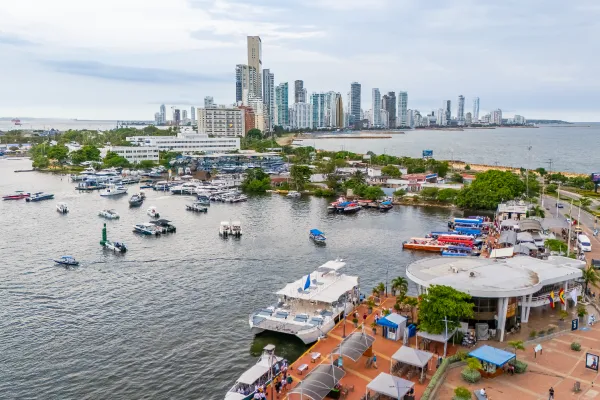
Where It All Began: The True Story of the First Navigations to Cartagena
A bay that changed everything
The maritime history of Cartagena doesn’t begin with modern tourism or luxury catamarans. It begins in 1501, when Spanish navigator Rodrigo de Bastidas first sailed along the coasts of what is now Colombia’s Caribbean region. Aboard sailing vessels such as the Santa María de Gracia and El San Antón, Bastidas was struck by the natural depth of Cartagena’s bay—an ideal haven for ships. Without knowing it, he was setting the course for a port that would be coveted for centuries.
But it wasn’t until 1533, with the expedition of Pedro de Heredia, that the city of Cartagena de Indias was officially founded. Heredia arrived from Santo Domingo with a fleet of small, fast ships designed to navigate the reefs surrounding the area. He came in search of gold and new trade routes, but he also discovered a network of natural channels, fertile land, and a strategic location that would turn Cartagena into a key hub for transatlantic commerce.
From natural harbor to imperial stronghold
Cartagena’s natural harbor was quickly exploited by the Spanish as the ideal point for shipping goods and precious metals from the interior of the continent. This wealth attracted not only trade but also danger: English, French, and Dutch corsairs began lurking in the bay by the mid-16th century. To defend the port, the Spanish Crown built one of the most complex fortification systems of the colonial world.
Between 1556 and 1796, iconic structures were constructed, such as the San Felipe de Barajas Castle, the San Sebastián del Pastelillo Fort (located right across from the bay where Flamante sails today), and the walls that still surround the historic center. Every stone tells a story of navigation, defense, and the meeting of cultures.
The galleon and the sea: protagonists of the colonial Caribbean
During the 16th and 17th centuries, the most common ships arriving in Cartagena were galleons—heavy, robust war and cargo ships. These vessels brought manufactured goods from Spain and returned loaded with gold, silver, emeralds, fine woods, and enslaved people. The Fleet and Galleon System, imposed by the Crown, made Cartagena an obligatory stopover on routes between the Americas and Europe.
The voyages were long and perilous. Crossing the Atlantic meant facing storms, disease, and the constant threat of pirate attacks. Yet Cartagena endured, time and again, protected by its privileged geography and vigilant maritime defenses.
Life in the port: between sails, accents, and smuggling
As centuries passed, Cartagena became a cultural crossroads. The coming and going of ships brought not only goods but also ideas, languages, flavors, and customs. Along the shore, between nets and barrels, Andalusian, African, Creole, and Caribbean accents blended. The port was a stage in constant motion, where arrivals were celebrated, farewells mourned, and stories of love, trade, and resistance were born.
Even outside the law, the sea remained central: smuggling thrived as a parallel economy to the official one, bypassing Spanish monopolies and enabling trade with other European powers. The small vessels gliding through the channels at dusk didn’t always answer to the empire, but they did respond to the vital pulse of a city that never stopped looking to the sea.
The silence of the sea: living memory of a navigated city
Sometimes it’s enough to stand on deck, gaze at the horizon, and let the wind carry its own whispers. Because the sea off Cartagena isn’t just scenery—it’s a living archive. There float echoes of African songs, ancient Castilian commands, and the creaking wood of ships that sailed these waters centuries ago. Every modern vessel crossing the bay—including the single luxury catamaran Flamante—is a witness to that history. And those who board are not just sailing to paradise islands, but into a story still being written.
Flamante: sailing today over centuries of history
Each time Flamante departs from Cartagena, it doesn’t sail through anonymous waters. It sails atop centuries of navigated memory. What some see as just turquoise sea and warm breeze, we recognize as the backdrop of the first transatlantic encounters, of epic journeys, and of discoveries that shaped Latin America’s destiny.
Our mission is clear: to offer a modern, exclusive, and safe experience—but also one deeply connected to this past. Because we believe the sea is not only for enjoyment—it’s for remembrance.
Discover how sailing today can be a way of reliving history:
👉https://flamantecatamaran.com
